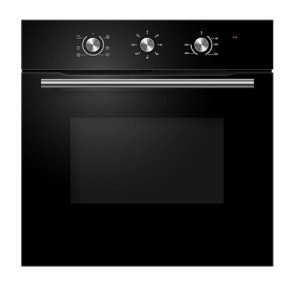The Comprehensive Guide to Built-In Ovens
Introduction
Built-in ovens are a staple in modern-day cooking areas, integrating beauty with functionality. They use a streamlined aesthetic and efficient cooking abilities, making them a favored choice for homeowners and cooking lovers alike. This post explores the advantages of built-in ovens, their numerous types, crucial features to consider, installation suggestions, and upkeep guidance, in addition to frequently asked concerns.
Advantages of Built-In Ovens
Built-in ovens included a range of advantages that add to their popularity. Here are some crucial advantages:
- Space-Saving Design: Built-in ovens are developed to fit perfectly into cabinetry, permitting a more orderly and space-efficient kitchen design.
- Aesthetic Appeal: They provide a streamlined and modern-day look that can enhance the general design of the kitchen.
- Improved Functionality: Built-in ovens typically include sophisticated functions and innovations that support different cooking methods.
- Boosted Cooking Experience: Many built-in models include self-cleaning functions, temperature level probes, and programmable settings, improving the cooking experience.
- Increased Property Value: A properly designed kitchen with built-in appliances can enhance the worth of a home.
Kinds Of Built-In Ovens
Built-in ovens been available in numerous types, each designed to satisfy different cooking choices and requirements. Here are the main types:
| Type of Built-In Oven | Description |
|---|---|
| Single Oven | A single, standalone oven for traditional baking and roasting. |
| Double Oven | Combines 2 ovens in one system, permitting for several meals to cook at various temperature levels. |
| Wall Oven | Set up in the wall, freeing up counter area, perfect for small cooking areas. |
| Stove | Utilizes fans to circulate hot air for even cooking, boosting the outcomes of baked goods. |
| Steam Oven | Uses steam for healthier cooking options, protecting nutrients in food. |
Key Features to Consider
When picking a built-in oven, a number of functions can impact performance and use. Here are some necessary functions to remember:
Cooking Modes
- Bake: Traditional baking with bottom heat.
- Broil: Top heat cooking ideal for browning and crisping.
- Convection: Circulates hot air for even cooking.
- Steam: Uses steam for much healthier cooking options.
Size and Capacity
- Standard sizes normally range from 24 to 30 inches broad.
- Consider the internal capability-- it can range from 3 to 6 cubic feet, enabling for numerous dish sizes.
Controls and Smart Features
- Touchscreen Controls: Easy programming and changes.
- Smart Technology: Connectivity features enable remote tracking and control through smartphone applications.
Energy Efficiency
- Try to find models with ENERGY STAR ratings, suggesting lower energy consumption.
Security Features
- Functions like auto shut-off and kid locks improve security throughout operation.
Setup Tips
Installing a built-in oven might require professional help, however here are some basic tips to keep in mind:
- Choose the Right Location: Ensure there's adequate space in your cabinetry for setup, keeping in mind ventilation requirements.
- Electrical Requirements: Check that your kitchen's circuitry fulfills the oven's power requirements, especially for electric designs.
- Level the Oven: Ensure the oven is level to promote even cooking.
- Secure the Oven: Attach it strongly to the cabinets to avoid movement throughout usage.
Upkeep Advice
Regular upkeep is crucial for the longevity and performance of a built-in oven. Here's how to keep it in leading shape:
- Regular Cleaning: Wipe down surface areas after each usage and perform deep cleaning occasionally.
- Check Seals: Inspect door seals for wear and ensure they maintain an airtight fit to improve energy efficiency.
- Calibrate Temperature: If food consistently comes out overcooked or undercooked, consider recalibrating the oven's temperature settings.
- Professional Servicing: Schedule annual check-ups with a trained professional to preserve optimum performance.
Frequently asked questions
What is the difference in between a built-in oven and a freestanding oven?
Built-in ovens are developed to be set up within cabinetry, providing a seamless appearance. In contrast, freestanding ovens are standalone units that generally feature their own cooktop.
Are built-in ovens more pricey than freestanding designs?
Usually, built-in ovens can be more costly due to the included setup costs and advanced features. Nevertheless, rates vary extensively based on brand, size, and functionalities.
Can I set up a built-in oven myself?
While it is possible to set up a built-in oven yourself, it is recommended to work with an expert to guarantee proper installation, particularly if adjustments to cabinetry or electrical work are needed.
How typically should I clean my built-in oven?
It is advisable to clean your built-in oven regularly after heavy usage. For much deeper cleanings, make use of the self-cleaning function if available or occasionally carry out manual cleaning to avoid build-up.
Built-in ovens are a valuable addition to any kitchen, providing both aesthetic appeal and advanced cooking capabilities. By comprehending their types, features, setup, and upkeep requirements, homeowners can make educated choices that enhance their cooking experience and improve the general value of their homes. As gas hobs and ovens built in Ovens And Hobs continue to progress, built-in ovens will likely stay a prominent choice for modern-day homes.

